Getting to Kyoto by bullet train
This was our first ever visit to Japan. We flew into Narita in the late afternoon (4:20pm), and needed to get to the Tokaido Shinkansen Line (‘bullet train’) for our train journey to Kyoto for our first night. We had little time to spare and a few tight connections to make. Passport control, baggage pickup and customs were all a breeze.
The airport was very busy, but everything was meticulously signposted and well organized, and all signs were in Japanese and English. We’d ‘rehearsed’ the route from arrivals to the Japan-Rail (JR) office using YouTube; there are dozens of people who have filmed the actual walk through the airport, and they are very helpful!

At the JR office, there was a medium line ahead of us (5 groups), but it was moving fast. At the counter, the lady spoke very good English, and we easily exchanged our pre-purchased voucher for the actual JR-pass. She then told us exactly how to get to the ‘Narita Express’ line, and showed us the exact connections, destination signs, and times for us to change over to the Shinkansen (bullet) train at the Shinagawa station. She even showed us this page, which was specific to our departure time.
This gave us just 8 minutes to get from the office to the Narita Express train, which we barely made!

This is a map of our journey from Narita T2 to Shinagawa, using Narita Express (red line), passing through the main ‘Tokyo’ station. We could have transferred to the Shinkansen at the main Tokyo station but reviews had said the transfer was easier / shorter at Shinagawa; the flip side is, trains start at Tokyo so you have more time to board. The Shinkansen trains run on a strict schedule and the doors close very quickly.
The Narita Express train is very comfortable, and there’s plenty of room for luggage by the doors. The journey time to the Shinagawa station is 1h 15m. At the Shinagawa station, we had exactly 11 minutes to get to the correct platform for the Kyoto train, which we easily achieved (with 4 pieces of luggage plus backpacks, etc). There were several trains we could catch after our schedule train (19:10), but our reservation was for that specific train and we weren’t totally clear on how to change reservations, so it was good that we caught our assigned train.



The Shinkansen trains are truly impressive; clean, quiet, and of course, fast – they make the 283 mile journey from Tokyo to Kyoto in just 2h 40m, traveling at up to 200 mph. There’s an even faster option (2h 2m) – the ‘Nozomi’ service – but it wasn’t included in our JR Pass so we were on the ‘Hikari’ service. These super-fast trains leave every 10 minutes! This is an interesting article about the service.

Kyoto Station, and Hotel GranVia
Our hotel was at the main train station in Kyoto – a great central location with easy access to everywhere. The station is a modern marvel; underground passageways lined with shops, a 10-story department store, a restaurant level, and our huge hotel (Hotel GranVia). Our room was great – spacious, and quiet (typical Japanese hotels can be on the smaller size).
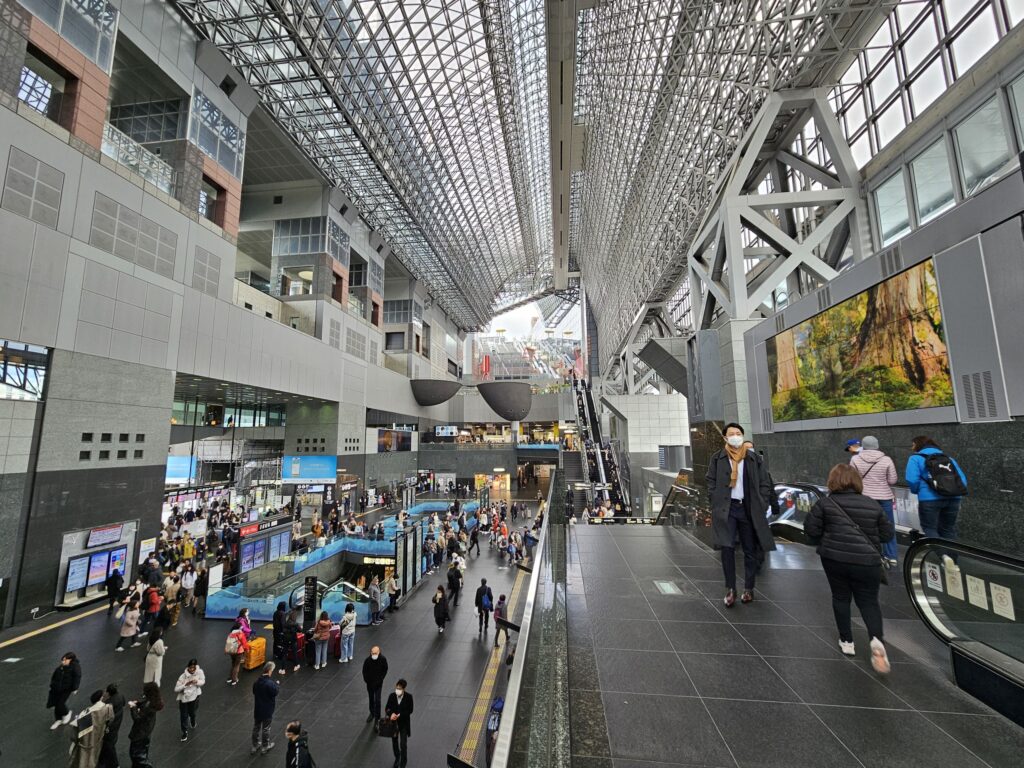
You know you are in Japan when the toilet has a control panel on the wall like this. It starts to warm up when it senses you are close, and flushes when you leave.

The breakfast buffet at the hotel was the best we’ve ever experienced, bar none. They had every conceivable ‘western’ option (bacon, eggs, sausages, toast, fruit, cold-cuts, cereal, etc) plus a complete selection of Japanese options – pickles, mushrooms, and all manner of interesting looking treats. And – they had a decent espresso machine that I could self-serve my coffee!
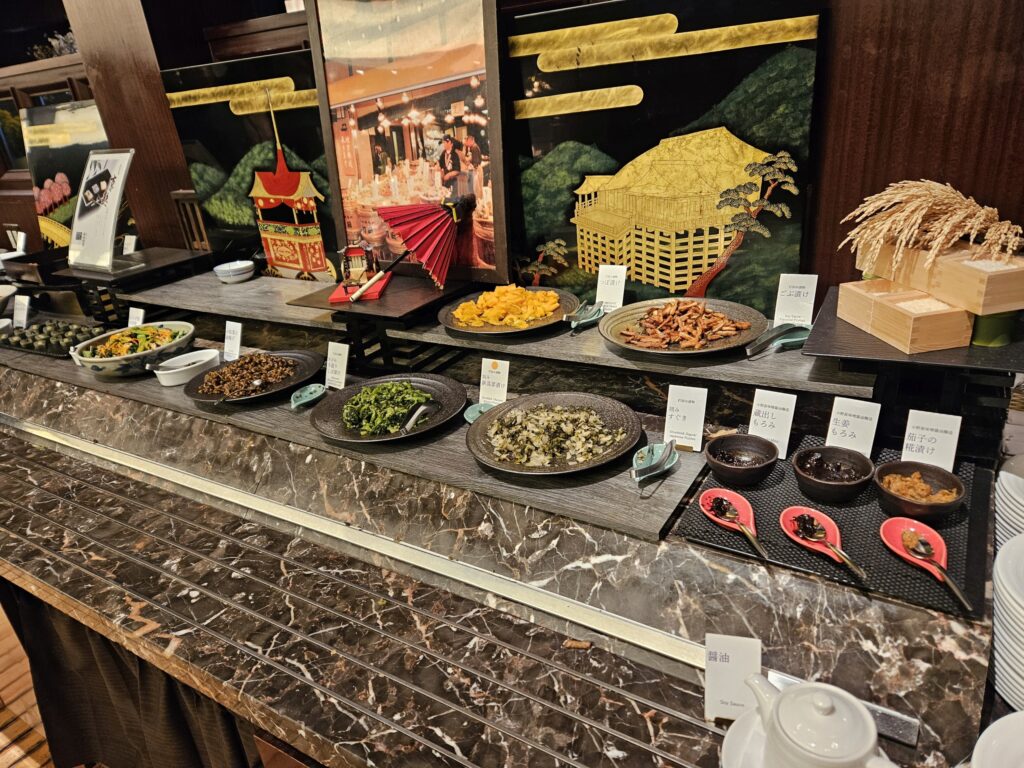








After a fabulous breakfast, we headed out for our first day in Kyoto. It was cold and slightly wet.
Kiyomizu-dera temple
The bus station was part of the train station complex, so we easily found the correct bus stop. But before that, we had to buy the ‘day pass’ for the local busses and subway. The office was easy to find, and the agents were incredibly helpful. We accidentally left our ‘foreign currency’ pouch on the counter, and an agent ran out after us to return it!
The line for ‘our’ bus (206) was very long, but … they had an ‘agent’ at the far end of the line holding a big sign so you knew exactly where to join the queue for your bus! This was a pattern that repeated over and over – helpful people everywhere, incredibly organized, making life so easy for the visitor. They really care! And on the bus, the signs alternately displayed ‘next stop’ information in Japanese and English.


We had researched all the bus and train journeys using Google Maps and Google Streetview ahead of time, so we knew how many stops, what our stop looked like, and where to get off. We finally got to our first destination – the road leading to Kiyomizu-Dera Temple.
The road (Matsubara-Dori) from the bus stop to the temple presented a steady climb, and was full of traditional Japanese architecture. Lots of colorful, welcoming stores along the way (no tacky ‘T-shirt shops!).
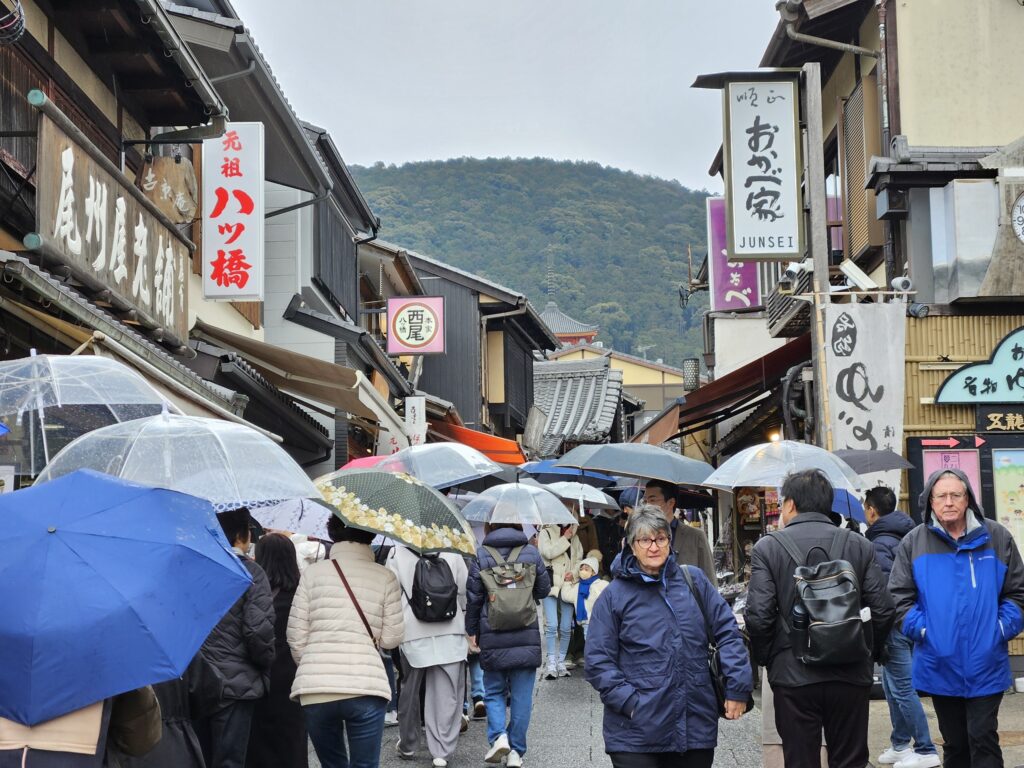


Kiyomizu-Dera is a Buddhist temple founded in 780 consisting of over 30 structures including shrines, pagodas and halls dedicated to various deities. The current structures were mostly reconstructed in 1630, and the location is registered as a Unesco World Heritage Site.
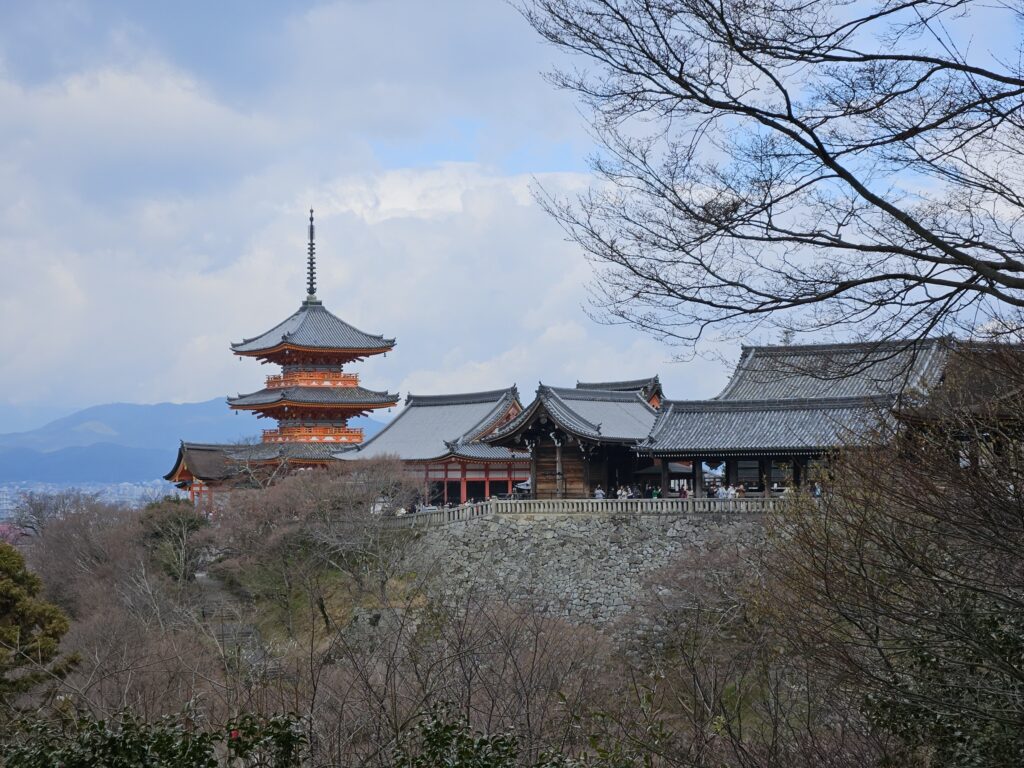
The following is a gallery to view the images full size.
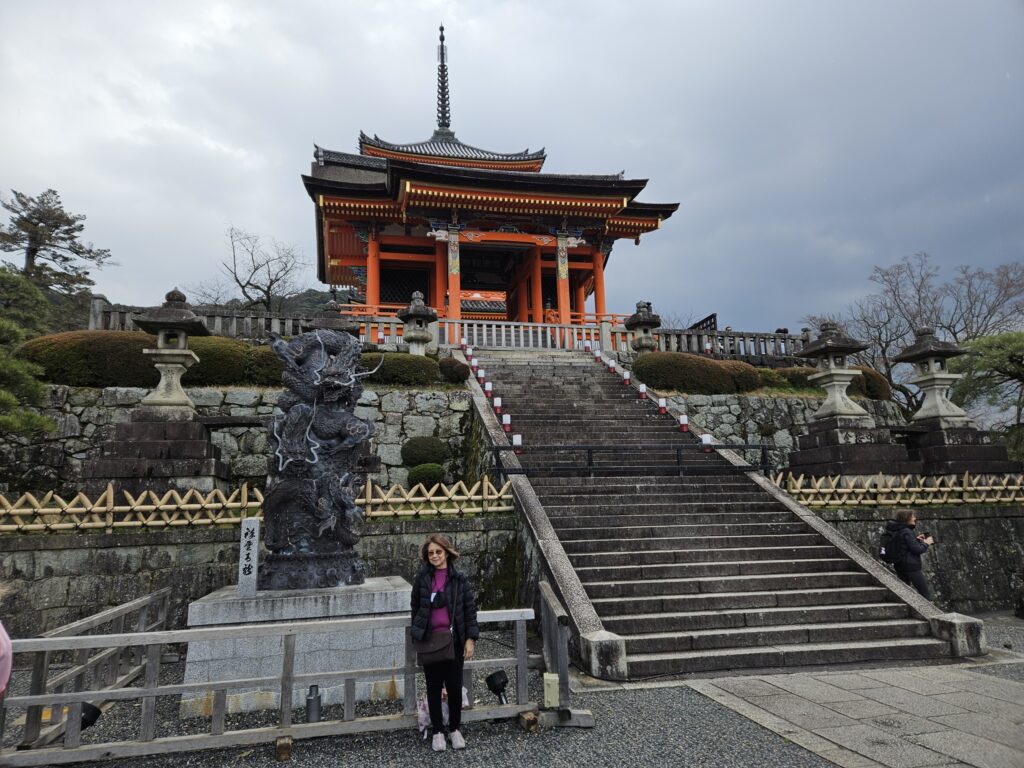
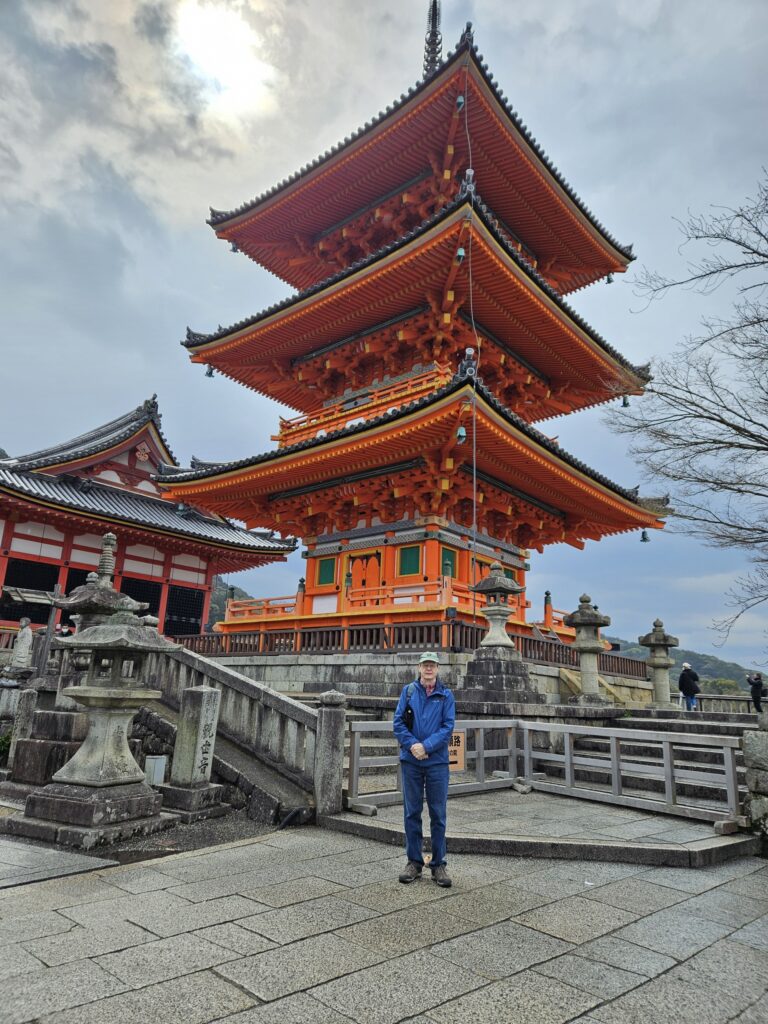
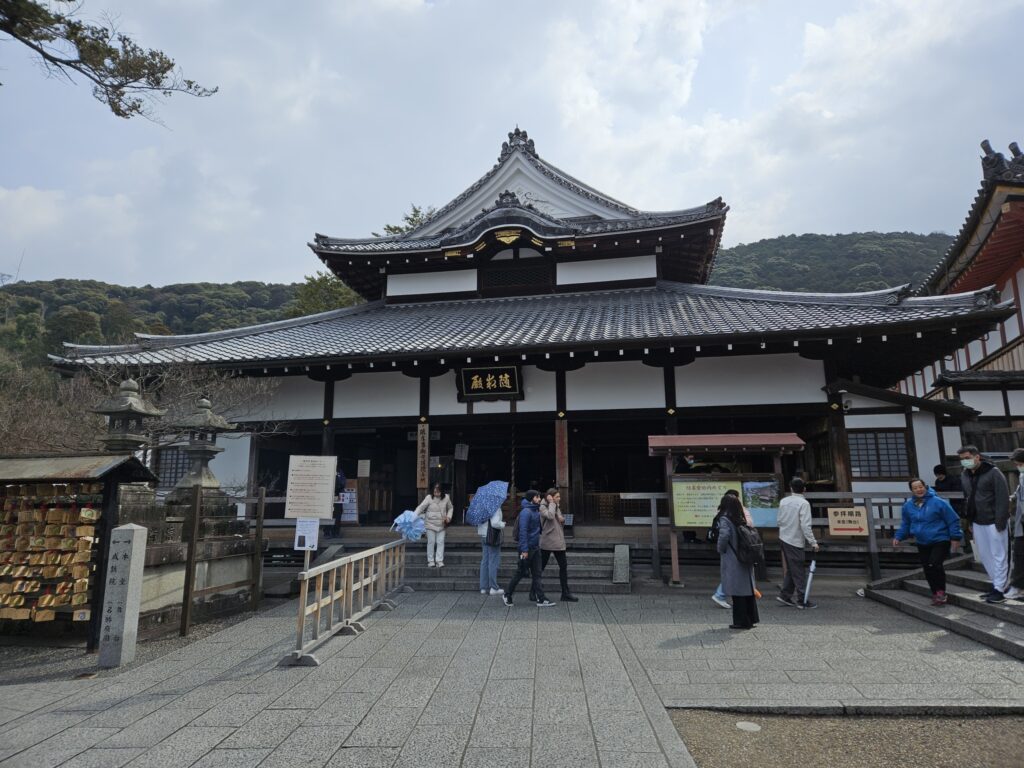
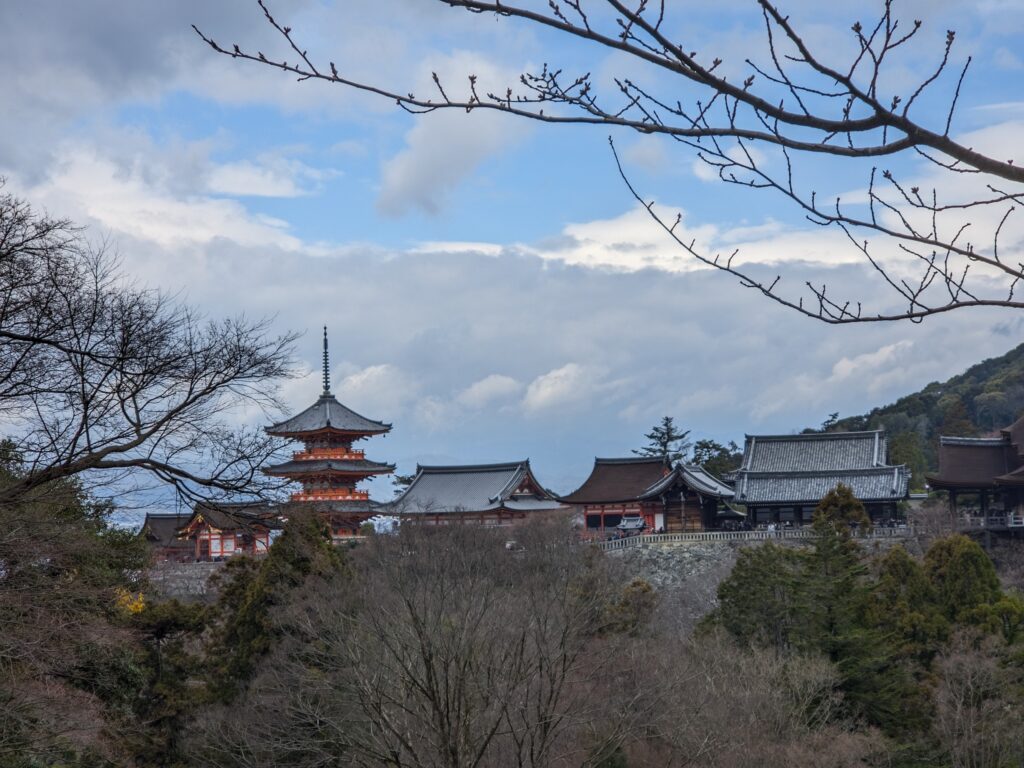
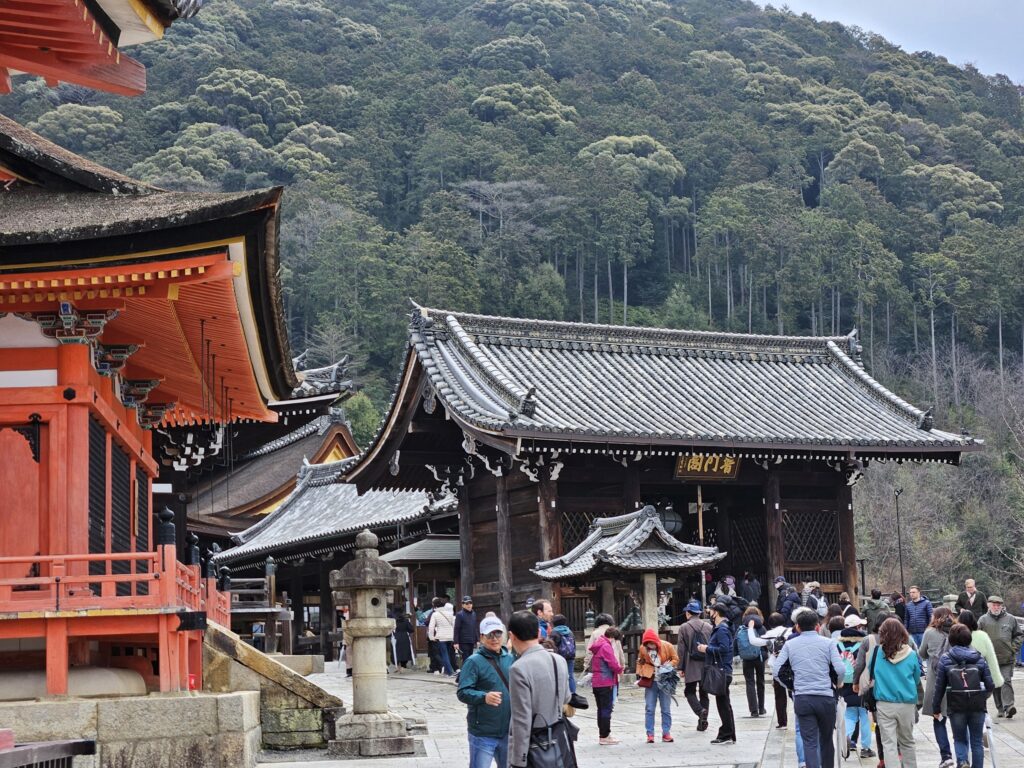




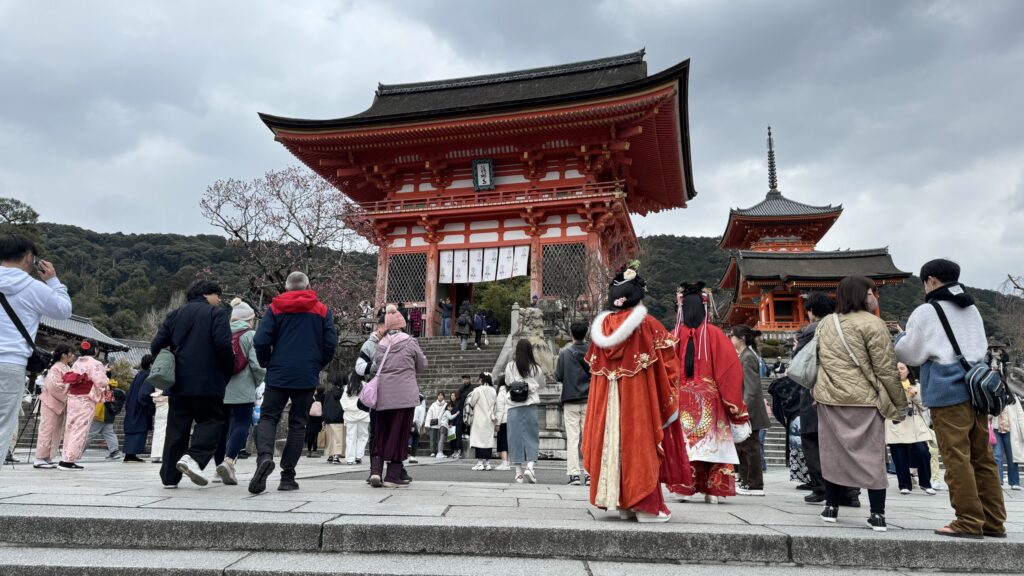


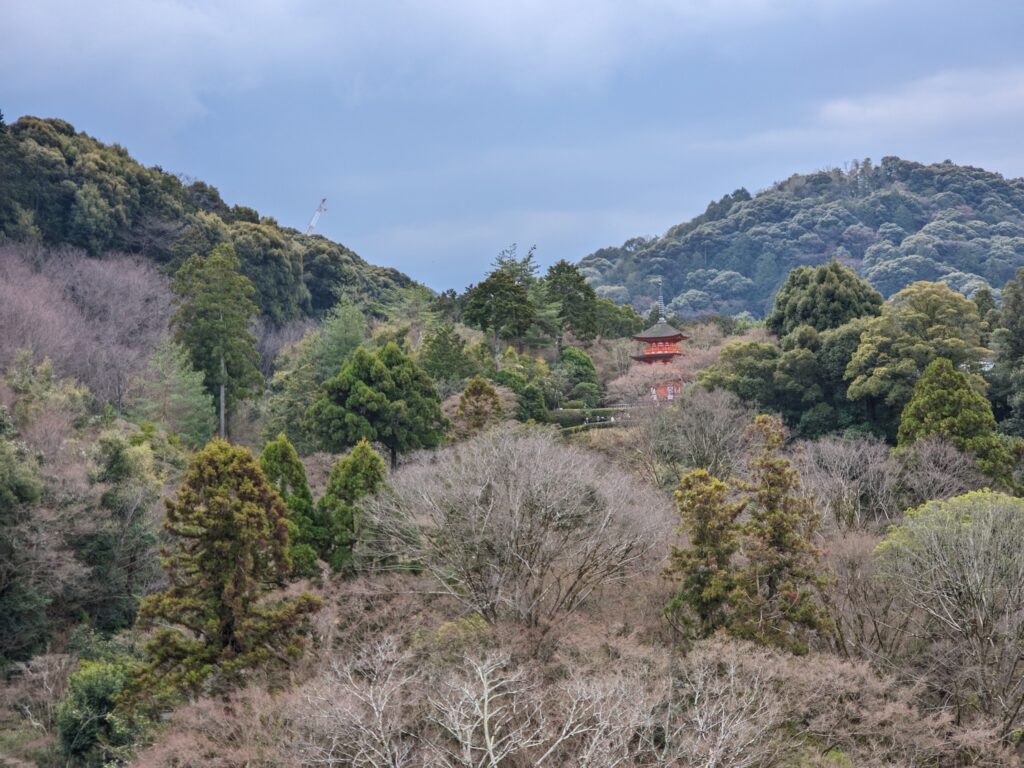
Sannen-zaka and Ninen-zaka shopping streets
After enjoying the temple, we headed for our next destination (Gion district), passing through the famous Sannen-zaka and Ninen-zaka shopping streets – two narrow, hilly streets lined with traditional shops and houses.
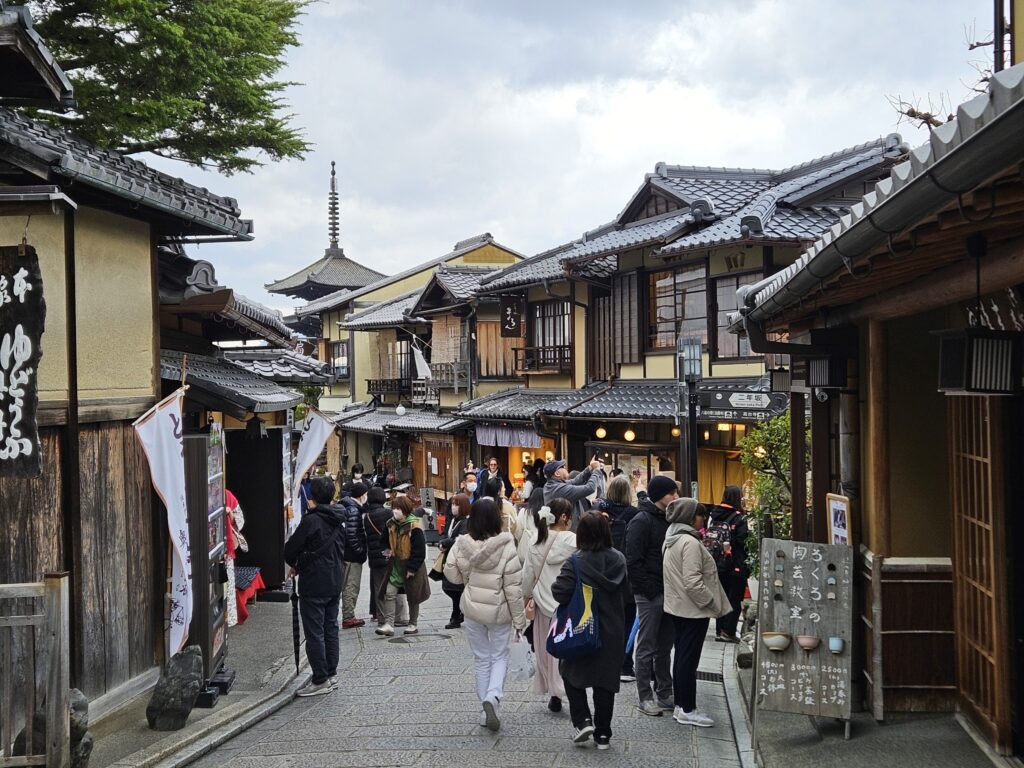
Another gallery of images from this area (click to expand):







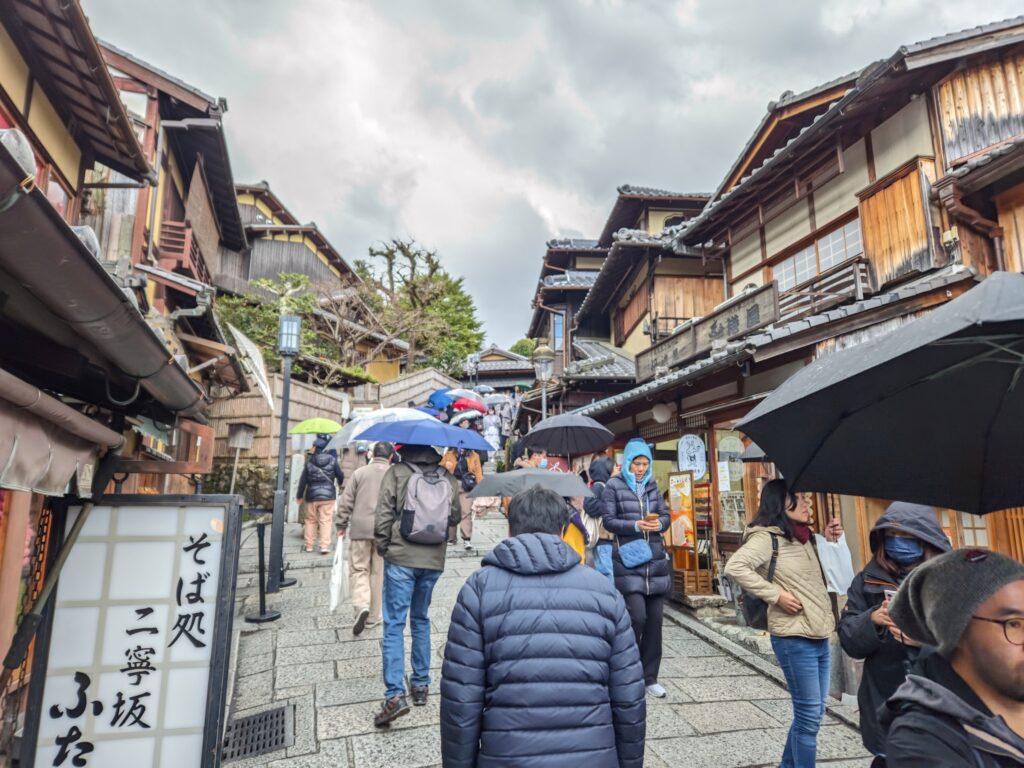
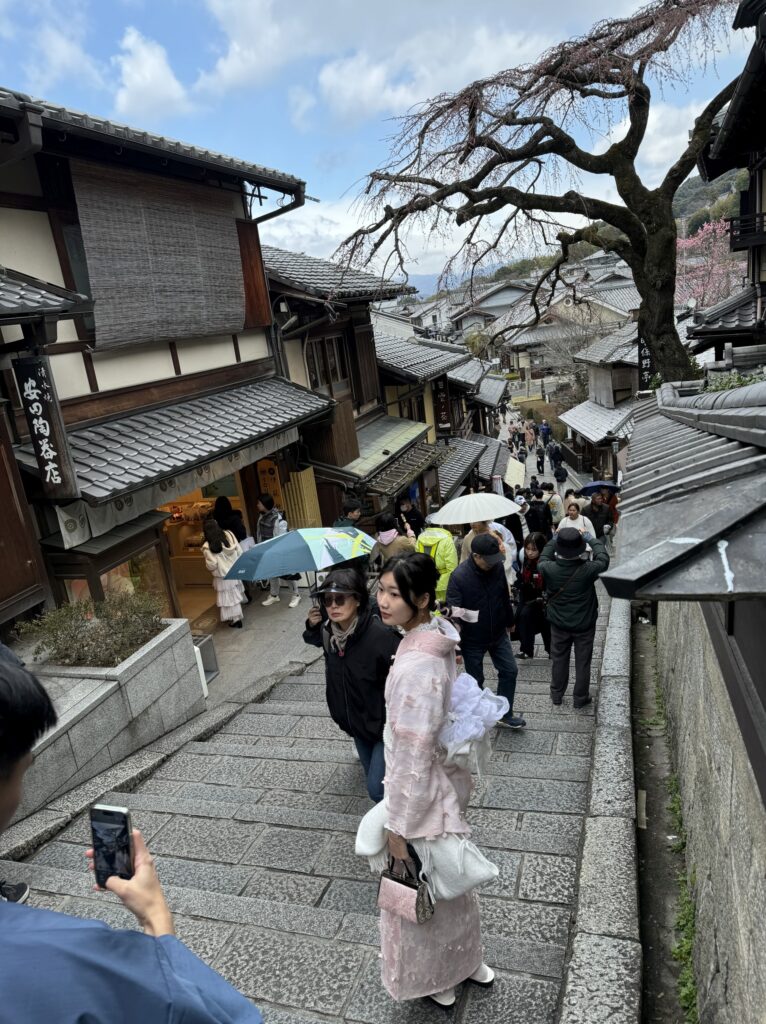
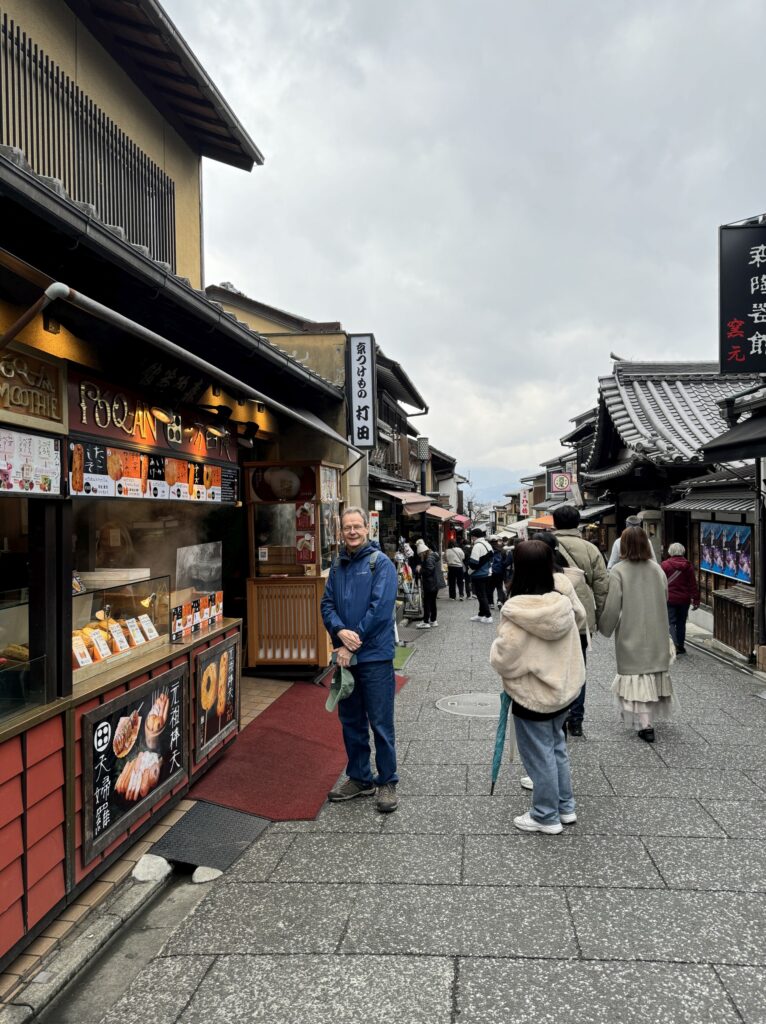

Yasaka Shrine and Gion District
After passing through these delightful streets, we headed for the Yasaka Shrine – the local shrine for the Gion District. On the way, we had planned to visit 3 or 4 more shrines/temples (Kodai-ji, Hokan-ji, Yasaka-Koshindo, and more), but there were just so many, we decided to skip them. We entered Maruyama park, and then into the Yasaka shrine.

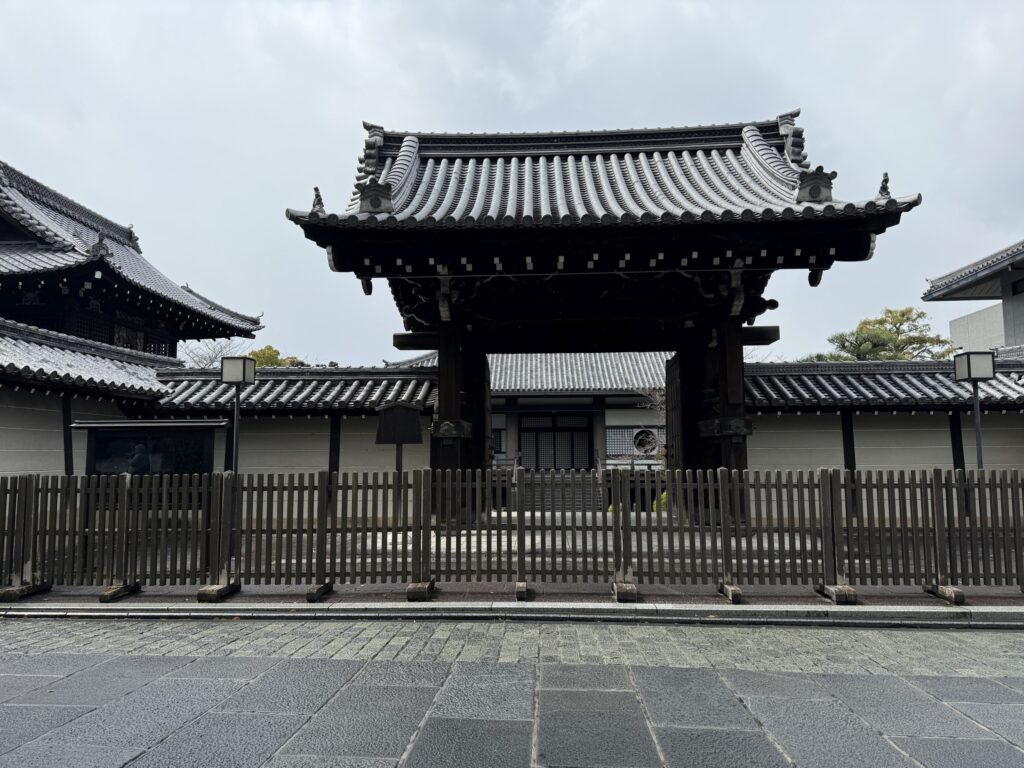
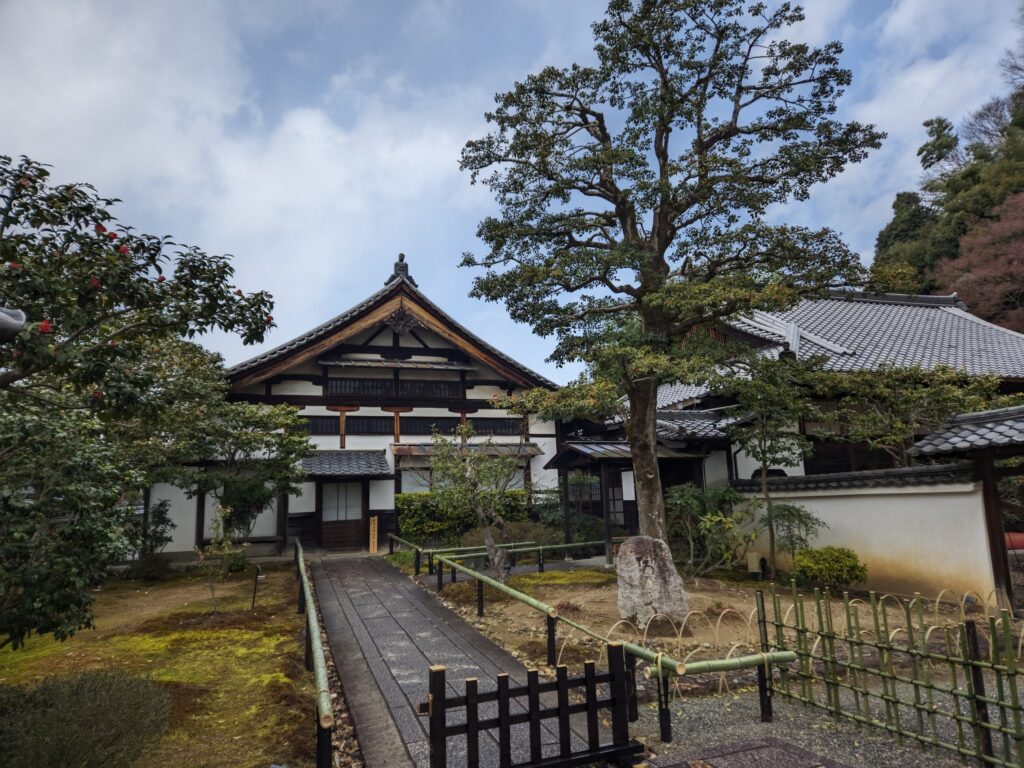


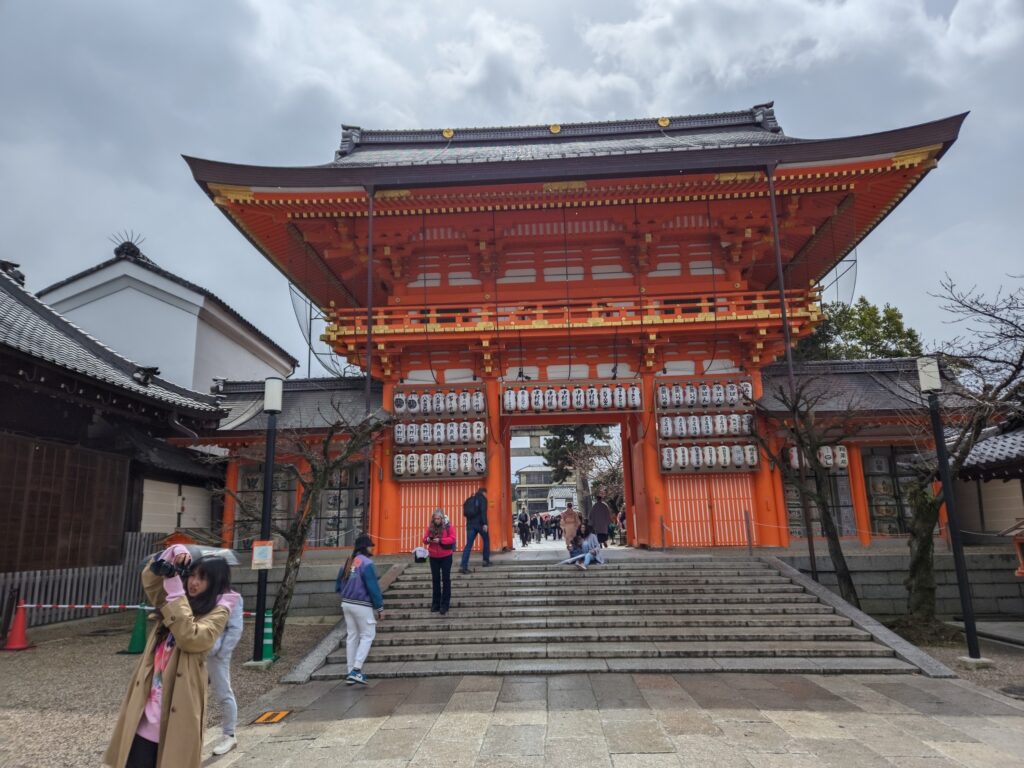


After passing through the shrine, we arrived at the Gion District. Gion is Kyoto’s (and Japan’s) most famous geisha district. Interesting and informative article about Geisha’s here.
Takashimaya Food court and Nikishi Market
It was time for lunch, and we’d read that the big Japanese department stores have amazing basements full of food vendors, so we headed to the basement of the enormous Takashimaya store. It was even better than we had hoped – stall after stall of delicious looking foods.






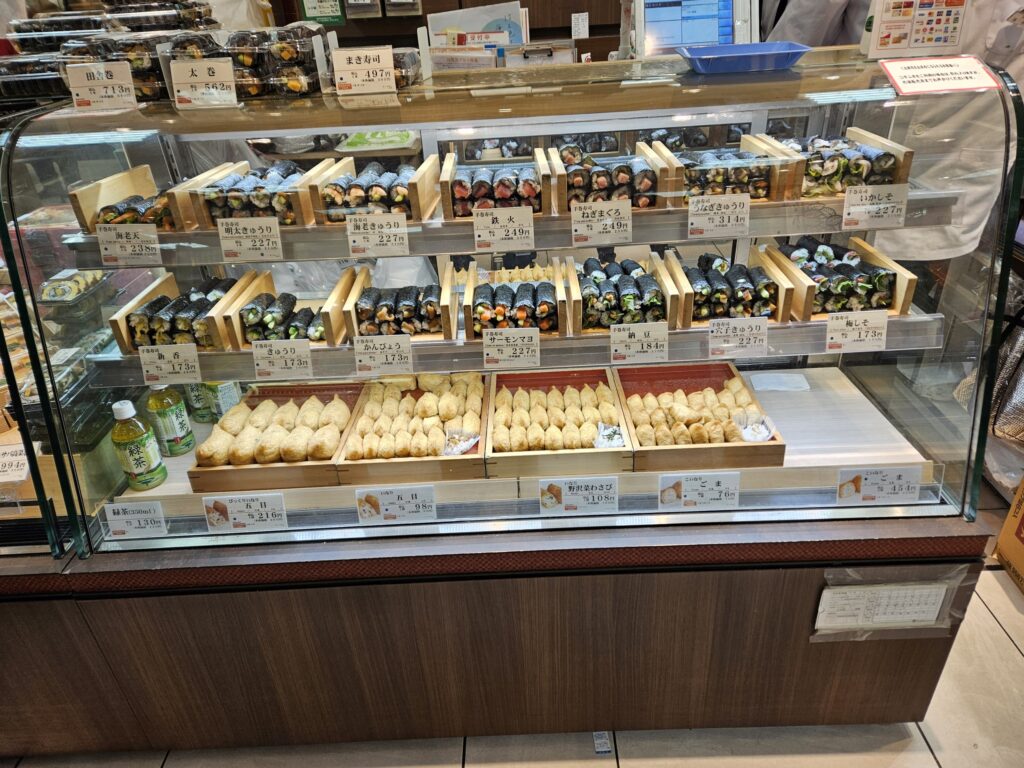

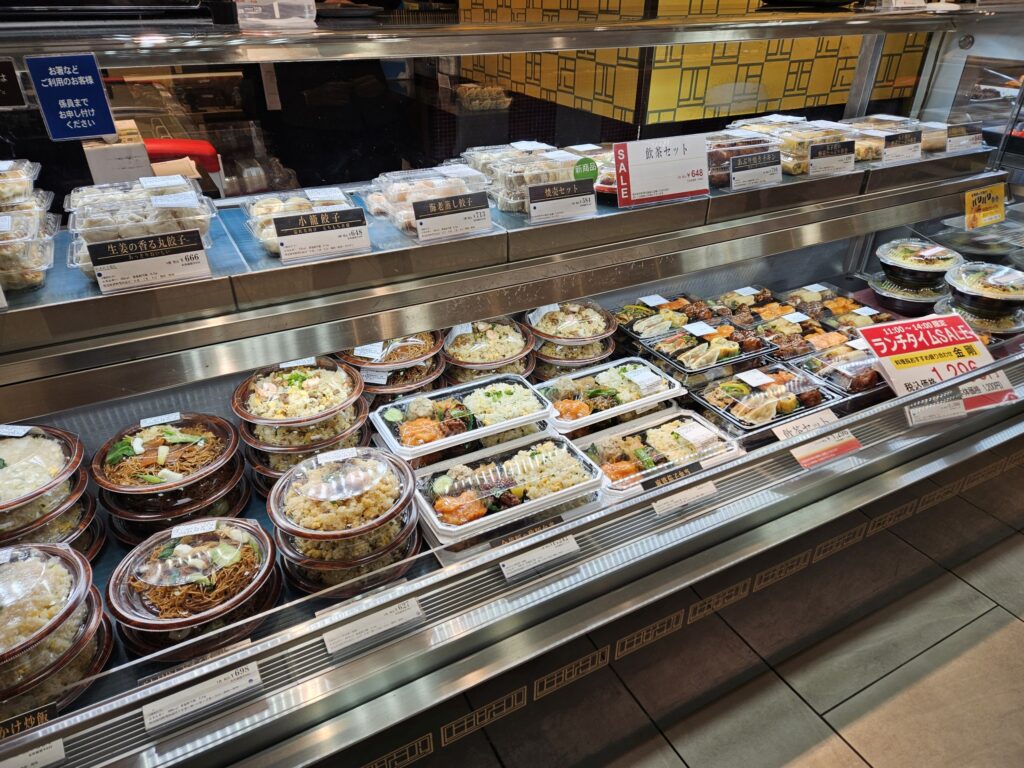

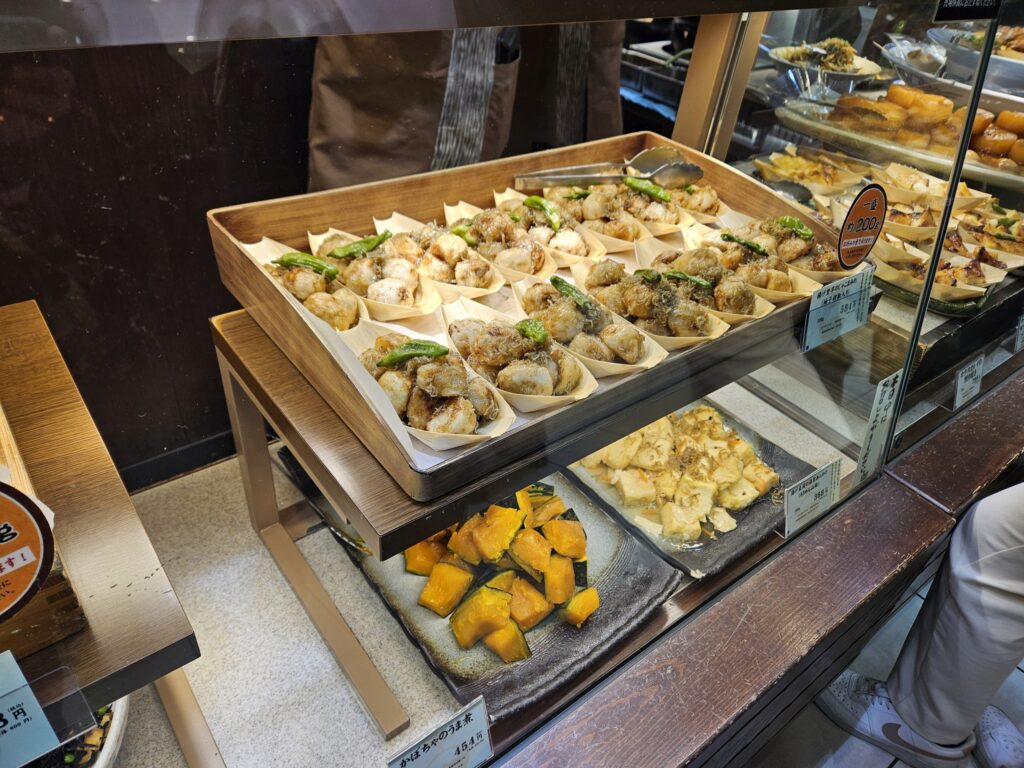
The problem was, there was nowhere to sit! Apparently all the locals purchase food here, then take it home. It was too cold to take the food outside, so we left empty handed, despite all the delicious food!

We next tried the Nishiki Market area. The Nishiki market is perhaps the most famous shopping street in Kyoto; it’s a covered street market full of everything from food to clothing to luggage to trinkets. It was way too crowded (and narrow) for our liking – we could barely move! But we were glad to see it. We finally hopped a cab and headed back to the hotel, where we had a light snack and took a break. This was a prevailing lesson from our trip – restaurants are busy! You need to plan out your meals more than anywhere else we’ve been. The cab, by the way, was quite something – an elderly gentleman driving, wearing white gloves, very ‘proper’. Unlike in many countries, we never felt like we were going to be ripped off!
Pontocho Alley and Dinner

After a brief rest at the hotel, we headed back to ‘Pontocho alley’, a noted restaurant alley (pedestrian only) located between the Nishiki Market area and the Gion District. Wall-to-wall restaurants, all looking good, but we already had a reservation at a top-rated restaurant in the Gion District, so we just enjoyed the atmosphere.
While in the Pontocho alley, the temperature dropped, and suddenly there was snow blowing into our faces! It was cold! We managed to make it over to Gion, and found our restaurant – ‘Premium Pound’.
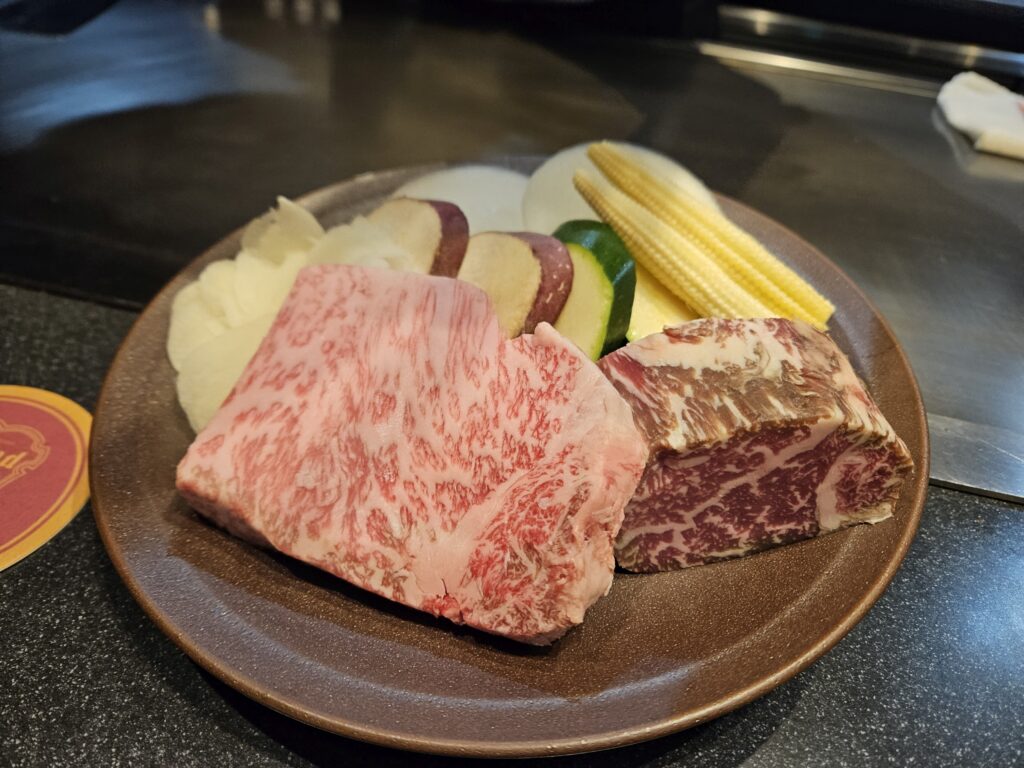
Rated as one of the best restaurants in Kyoto, this restaurant specialized in serving Japanese steaks, Teppanyaki style (cooked on a hot plate in front of you). We were seated at a counter with only 8 seats (and no other seats anywhere, as far as we could see), and we had our own personal chef who prepared our meal. They offered Kagoshima beef (13,000 yen), Wagyu beef (30,000 yen) and Kobe beef (22,000-40,000 depending on exact cut). 40,000 yen is $250 US – not cheap! We opted for the Kagoshima and the Wagyu. Never have I seen such beautifully marbled beef! However – I hate to admit it, but – it was too rich for me! So I will put this down to a great experience, but – one I won’t be repeating soon. Note that every other meal in Japan was incredibly reasonably priced, so this was our one exceptionally priced ‘splurge’ meal.
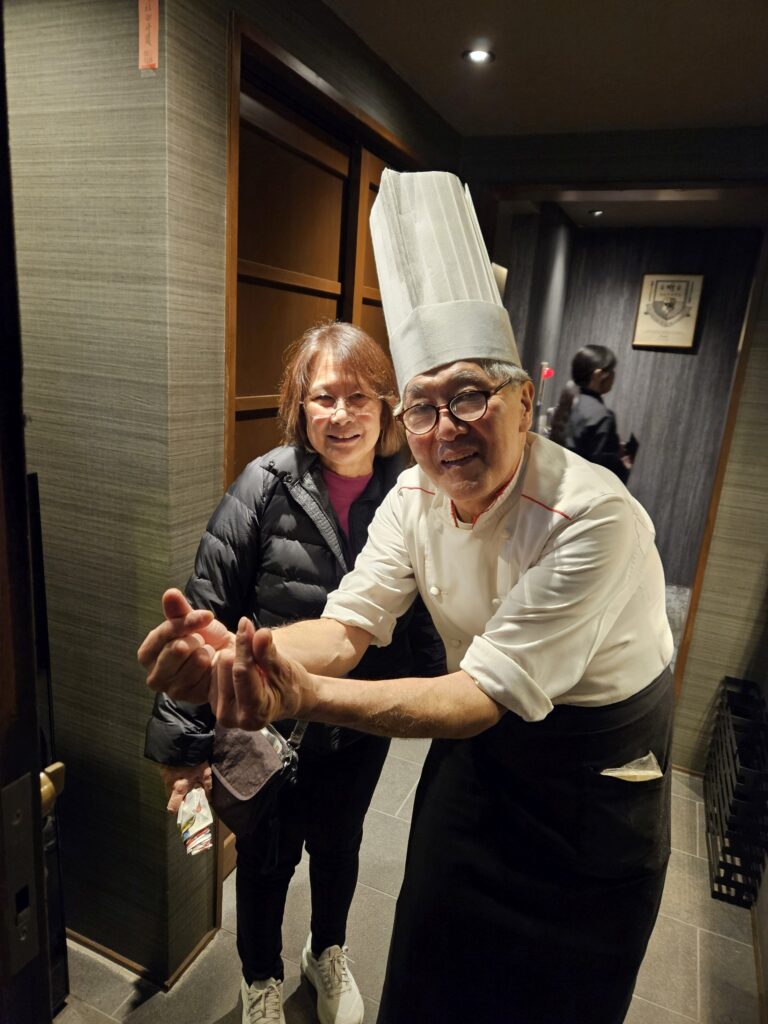
Our personal chef escorted us to the door. We took the subway home – so in 24 hours, we had taken the Narita express train, the Shinkansen bullet train, the local bus, a taxi, and the subway!

Leave a Reply